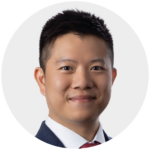What is the role of ESG funds within portfolios against a backdrop of high levels of inflation, volatility and geopolitical tension?

Head of Asian credit fixed income, Asia, abrdn
Henry: Given the rapid growth in investor interest in ESG and sustainable investment, there is now a proliferation of ESG-integrated, sustainable investment and thematic funds that investors can use to construct a multi-asset portfolio. ESG funds is a broad term that covers a broad range of methodologies and approaches. The key consideration is understanding the risk and return characteristics of these funds and how these funds will affect the risk and return objectives of investors as well as their sustainability objectives.
At abrdn, we believe that integrating ESG into our investment approach leads to better long-term investment outcomes, as we look for material risks and issues that could translate into financial risks and subsequently impact investment outcomes. Recent events globally might have taken focus away from topics such as sustainability, but many governments both regionally and globally continue to push forward with regulation governing climate change, the environment and sustainable financing – recent droughts in Europe and Asia and their consequent impacts on livelihoods, power generation, and industrial production have only gone to highlight the potential risks that may lay ahead for economies. These changes in regulation and mindset also bring about opportunities for firms that are either playing a part in the transition or providing solutions for a sustainable future.
Nonetheless, while ESG factors will impact which companies we invest in, our investment approach also considers the overall environment that we are investing in, taking into account factors like volatility and inflation that will determine overall portfolio construction.

Co-portfolio manager, TT Environmental Solutions Equities, TT International
Harry: ESG funds can provide downside protection by channelling capital to companies that are better governed and have a positive impact on environmental and social issues. At a time when we are facing the spectre of not only high inflation, but also resource constraints and labour strife, companies that are responsible corporate citizens are much more likely to retain their social licence to operate. They are also more likely to benefit from supportive government policies and enjoy unhampered access to resources – both energy and people. Finally, stronger governance, which underpins ESG strategies, will protect minority shareholders at this challenging time.
Where are some of the most promising investment opportunities across the universe of ESG investments?

Head of Asian credit fixed income, Asia, abrdn
Henry: To meet the goals set out in the 2015 Paris climate agreement, the Intergovernmental Panel on Climate Change estimates that $2.4trn per year is needed to fund the transition towards renewable energy and other low-carbon projects[1]. Increased capital flows are also necessary to achieve other UN Sustainable Development Goals (SDGs): accelerating development in poor countries; and protecting an increasingly fragile environment as with tackling air pollution and water scarcity.
We believe strategies that have the potential to accelerate the global transition towards these goals will help investors meet both their long-term investment and sustainable objectives.
Within our fixed income strategies, there is a wealth of opportunity in funding energy transition within Asia and also across the world, from renewable energy projects to public transportation and electric vehicle supply chains. Globally, some of our fixed income funds are exploring impact themes such as Climate Transition and UN SDGs.

Co-portfolio manager, TT Environmental Solutions Equities, TT International
Harry: Environmental solutions are one of the most promising investment opportunities within the universe of ESG investments. Sir David King, the scientific adviser to the UK government, described climate change as the number one wealth creation opportunity of our time. Even at a time of difficulty, we can find opportunity. For instance, we are starting to see the preliminary results of overreliance on Russian gas in Europe, but inflationary pressures will necessitate a quicker transition to renewable energy in the continent, as well as globally. In the US, the Biden administration has passed the 2022 Inflation Reduction Act, which is looking to incentivise domestic production through tax credits and directing EV subsidies to cars that had their final assembly in America, as well as adhering to strict requirements for critical mineral sourcing that ramp up steeply over time. These are highly demanding policies and will redraw the competitive landscape. Investment Strategies that can capture some of these opportunities, while ensuring global diversification way, will benefit strongly.
Where will ESG strategies fit amid evolving approaches to portfolio construction and recalibrated models?

Head of Asian credit fixed income, Asia, abrdn
Henry: Many investors use a strategic asset allocation (SAA) process to shape their portfolios over the long term and will have their own SAA models.
We believe that SAA and ESG are closely linked and our research suggests that ESG factors are among the most important drivers of long-term returns and therefore deserve to be incorporated into the SAA process. If investors are serious about ESG integration, they need to consider how ESG factors affect long-term investment returns and this should be integrated in their SAA process.

Co-portfolio manager, TT Environmental Solutions Equities, TT International
Harry: True ESG strategies that are not mere relabelling of existing funds will receive more traction and will stand the scrutiny of both their investors and regulators. ESG strategies, especially impact funds, can also provide much needed diversification.
The Spotlight On: ESG will run on 6 – 8 September and ends with a LIVE event (on the 8th) where we will bring together a panel of fund selectors and the fund managers to discuss their views and join an interactive Q&A session.
Find out more about our Spotlight On: ESG

















